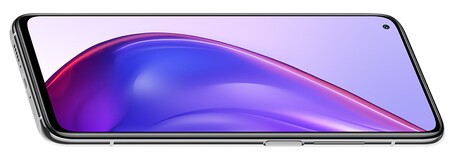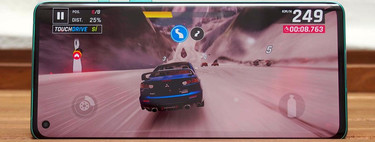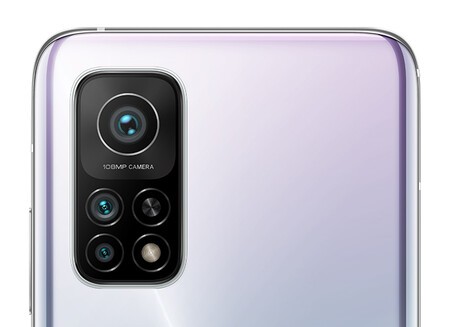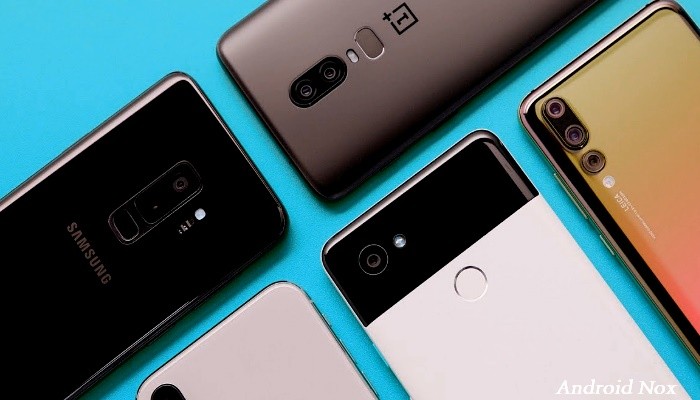The Xiaomi Mi 10T Lite, Xiaomi Mi 10T and Xiaomi Mi 10T Pro are already official, posing as the new alternative high-end of the company for this second half of the year. Of all of them, the most complete is the Xiaomi Mi 10T Pro, with Snapdragon 865 and 108 megapixel triple camera.
To see how is the Xiaomi Mi 10T Pro compared to its competition, we have compared it with the rest of recent high-end Android, such as the Samsung Galaxy S20 +, Realme X50, OnePlus 8 Pro, Poco F2 Pro, Huawei P40 Pro or the Motorola Edge +.
Hertz record
At this point in 2020, it is no longer surprising that all – or almost all – high-end mobiles are betting on a refresh rate higher than 60 Hz lifelong. This is the case with the models on our list, with the sole exception of the Xiaomi Poco F2 Pro, which has a standard refresh despite having a higher touch response rate of 180 Hz.
The Xiaomi Mi 10T Pro is the first mobile “for the masses” with a 144 Hz screen
Of course, it is still easier to find 90 Hz like those of the OnePlus 8 Pro, Huawei P40 Pro or Realme X50 than 120 Hz, which until recently was considered the top in terms of screen “smoothness”. . He Xiaomi Mi 10T Pro stands out in this regard by betting on 144 Hz. It is not the first mobile to reach this figure, but it is one of the first mainstream.

On the other hand, the Xiaomi Mi 10T Pro is the only mobile in our comparison that opts for an LCD panel instead of OLED, which means that the fingerprint reader has had to look for a place other than under the screen: it is on the side.

In screen size, there are not many differences between the models. All the latest high-end have a diagonal around 6.5 inches, and those of the Xiaomi Mi 10T Pro are no exception. There are no big surprises in the resolution either, since the Full HD + is the absolute standard with the exception of the QHD + present in the Samsung Galaxy S20 +.
Not so many lenses but a lot of megapixels

Xiaomi in particular and Chinese brands in general are very given to exaggerating with the cameras, opting for many lenses and even more megapixels, although in the Xiaomi Mi 10T Pro the company has contained itself … at least in terms of the number of lenses . Thus, it includes a triple camera with a 108 megapixel main sensor, while the competition mostly opts for cameras with four lenses and – except in the case of the Motorola Edge + – with fewer megapixels.
Included is a main sensor, a 13 megapixel wide angle and 5 megapixel macro sensor, while in the competition the most common is that a 2 megapixel sensor is included, either macro, ToF or sensor for portrait mode.
This year, the Mi 10T series abandons the motorized front camera and opts for perforation in the screen
As for the front camera, the Xiaomi Mi 10T Pro bets on a 20 megapixel lens perforated on the screen, unlike last year’s 9T. On paper it is above average: better than the 10 MP of the Galaxy S20 + or the 16 MP of the OnePlus 8 Pro, but technically inferior to those terminals that include two lenses, such as the Realme X50 Pro.
Lots of battery
As expected, all the high-end phones in our comparison are 5G, and this time more than ever there is almost unanimity on the processor included: the Snapdragon 865. There are only two exceptions: the Kirin 990 from the Huawei P40 Pro and the Exynos 990 from the Samsung Galaxy S20 +.
In terms of memory, the Xiaomi Mi 10T stays in the 8 GB RAM, which have become in a way the standard of the high-end range during 2020. Of course, the 12 GB version is also present in other models such as the OnePlus 8 Pro, Realme X50 Pro or Galaxy S20 +, in addition to the Motorola Edge +, which starts from the 12 GB.

In battery capacity, the Xiaomi Mi 10T Pro is in the first position shared with the Motorola Edge +, with its 5,000 mAh capacity. It is a little more than the bet of the rest, which are more around 4,500 mAh, although in return the fast charge remains at 30W, while other alternatives, such as Realme, already reach the 65W load.
Comparison chart
As always, we leave you with the complete specifications table so that you can buy the rest of the specifications of all the terminals that we have included in our list.
|
Xiaomi Mi 10T Pro |
OnePlus 8 Pro |
Realme X50 Pro |
Huawei P40 Pro |
Samsung Galaxy S20 + |
Little F2 Pro |
Motorola Edge + |
|
|---|---|---|---|---|---|---|---|
|
screen |
LCD 6.67 “ |
AMOLED 6.55 “ |
AMOLED 6.44 “ |
OLED 6.58 “ |
AMOLED 6.7 “ |
AMOLED 6.67 “ |
OLED 6.7 “ |
|
Dimensions and weight |
165.1 x 76.4 x 9.33 mm. |
160.2 x 72.9 x 8 mm. |
159 x 74.2 x 8.9 mm |
158.2 x 72.6 x 8.95 mm |
161.9 x 73.7 x 7.8 mm |
163.3 x 75.4 x 8.9 mm |
161.1 x 71.4 x 9.6 mm |
|
Processor |
Snapdragon 865 |
Snapdragon 865 |
Snapdragon 865 |
Kirin 990 |
Exynos 990 |
Snapdragon 865 |
Snapdragon 865 |
|
RAM |
8 GB |
8/12 GB |
8/12 GB |
8 GB |
8/12 GB |
6/8 GB |
12 GB |
|
Storage |
128/256 GB |
128/256 GB |
128/256 GB |
256 GB |
128/512 GB |
128/256 GB |
256 GB |
|
Frontal camera |
20 MP f / 2.2 |
16 MP f / 2.0 |
32 MP f / 2.5 |
32 MP f / 2.2 |
10 MP |
20 MP |
25 MP f / 2.0 |
|
Rear camera |
108 MP f / 1.69 |
48 MP f / 1.75 |
64 MP f / 1.8 |
50 MP f / 1.9 |
12 MP |
64 MP |
108 MP f / 1.8 |
|
Drums |
5,000 mAh |
4,300 mAh |
4,200 mAh |
4,200 mAh |
4,500 mAh |
4,700 mAh |
5,000 mAh |
|
Others |
5G |
5G |
5G |
5G |
5G |
5G |
5G |








